On Thursday 20th October, Galeria de Maika Sánchez welcomed its latest exhibition from Juan Tenorio, a self-taught artist from Barcelona.The Gallery, located in the heart of Valencia, was opened by curator Maika Sánchez in 1999 with the aim of providing a space for a range of diverse art forms such as painting, photography and sculpture. Having participated in over forty national and international fairs, this gallery is a force to be reckoned with in the Valencian art scene.
Tenorio’s exhibition features a number of painted cityscapes into which various newspaper cuttings, sheet music, letters and old manuscripts are incorporated, all of which he has collected on his various travels. On opening night, I was able to ask Juan Tenorio a few questions about his latest exhibition. As we peruse the gallery, Tenorio tells me of his creative process:
24/7 VALENCIA: What do these cities mean to you?
JUAN TENORIO: “Well, it’s more than what these cities mean. It’s more how I see it, the world, how I see the city through my person, through my filter, through my soul. New York is a film, it is cinematography, but it’s also my imagination from my childhood about it. What is the city? The advertising, the light, the colour? All this, when passed through me and through my hands, can express feeling.”
When did you start painting?
“Since I was a very small child. Yes, I always liked the virtue of art, but I didn’t dedicate myself to it. I didn’t dedicate myself professionally because I was a train mechanic. I worked as a train mechanic and I left it one day. I was 30 years old, and I said I don’t want to talk about trains any more, now I want to paint and painting has been working for a long time. Eventually, I became a professional painter 30 years ago, and now I am 60.”
How much time did it take you to create the collection?
“A lot … well every day I paint for hours, but I don’t paint one thing completely, I have five or six works going on at the same time in my studio. I go somewhere, I paint here, I treat the pictures and I create. But I only paint sixty or seventy pictures every year … around two exhibitions.”
What is your favourite thing to paint?
“You can see I really like the cityscape of New York, but in general, I like the city and I like the architecture. So, of course there are very pictorial cities in the case of New York, but also very nice cities like Paris. And I love London very much. No, I don’t have a favourite subject. I like many things.”
Could you explain to me the use of newspapers/letters in your paintings?
“There are a lot of, uh, ‘winks’ in my paintings, a lot of trickery so to speak. So, I use the collage to say things. And the painting is symbolic. The message painting the image, but also the painting being the message. They [the newspapers etc.] are all elements within the history of art and that, in a way, are part of the life of the city. In the city there is religion. Yes, there is the art of the city. Yes, there is youth in the city too. And in that process of making, building and removing, things appear that I don’t have control over but that I like.”
Was there a particular piece that spurred the whole collection? If so, what was it?
“I don’t know if it was here or Catalonia or Andalusia but in Spain in general there are speed painting competitions. I would come in the morning for five hours to paint an urban vision of the square. And the prizes were usually around 500€. I would use these resources. In the end I earned more money painting on Sundays than I did working all week in the train company. But it started like that, painting in the street. But fast painting. It’s like gymnastics.
Painting is a very … it’s a very cool exercise of improvising, having resources and building something in five hours, but in five hours you paint very interesting things, and you have resources, and you use them. And finally, a work appears that is halfway interesting, fresh, and spontaneous. That work took me here, to this collection.”
Do you ever do a first draft?
“I’m working, uh, freehand. I don’t draw the picture first. Sometimes a dark spot appears here, or I put a spot of light here. So, all the work is constant drafting. It allows me to … repent… to fix my own mistakes.”
How do you know when a painting is finished?
“I never know when the painting is finished. Sometimes, my daughter comes to me and says dad, don’t touch it anymore. Leave it like that. Okay, that’s it. Sometimes she tells me to work a little more. And other times I decide, I say, don’t work anymore, or keep on working. But at the end of the day at this very moment I could paint more.”
Have you lived in any of these cities?
“No, I’ve always lived in Barcelona, but I’ve travelled a lot. I’ve travelled to New York, and I’ve travelled to Paris, Rome and London, I’ve travelled to Florence for many trips to study. And wherever I go, I’m tearing up the city’s newspapers. But I’ve always lived in Barcelona. Barcelona is my city.”
Where else is your work exhibited?
“Well here in Valencia, of course. Also, in Madrid, in Malaga, Seville. I worked with Maika Sánchez years ago and I have already had four exhibitions now here in the gallery. And now, when I finish here, I will spend Christmas in Barcelona.”
After an enlightening conversation that sheds light on Tenorio’s creative process, he ends with this:
“In the end, before I paint a picture, I have to live, to see people, to know countries, to know cities, customs, colours, and flavours. And later? Paint.”
Visit Galería de Arte Maika Sánchez to see Juan Tenorio’s exhibition which will be on display until the 21st of November.
Address
Galería de Arte Maika Sánchez
Carrer de Moratín, 15,
46002 València, Valencia
Opening Hours
Monday – Saturday: 11am-2pm, 6pm – 9pm
Sunday: Closed
Report by Shemaiah Rose
Article copyright 24/7 Valencia
Photos copyright Shemaiah Rose/ 24/7 VAlencia
Related Post
This site uses Akismet to reduce spam. Learn how your comment data is processed.


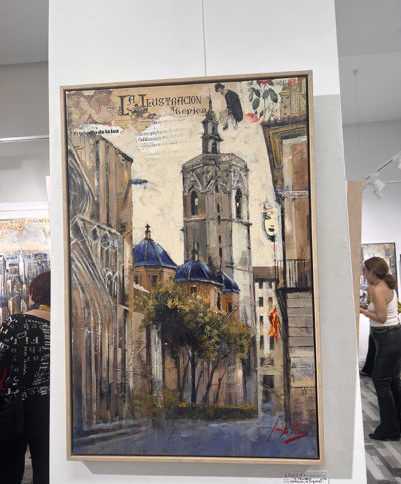
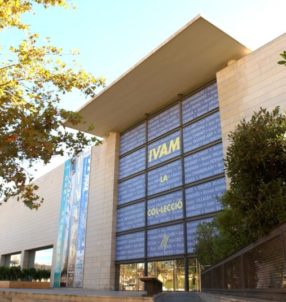
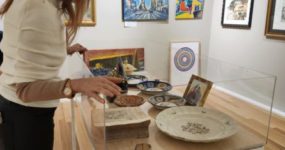
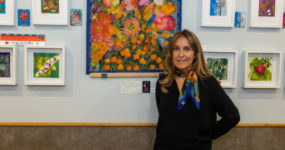

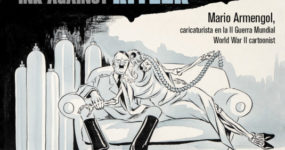

















Leave a comment